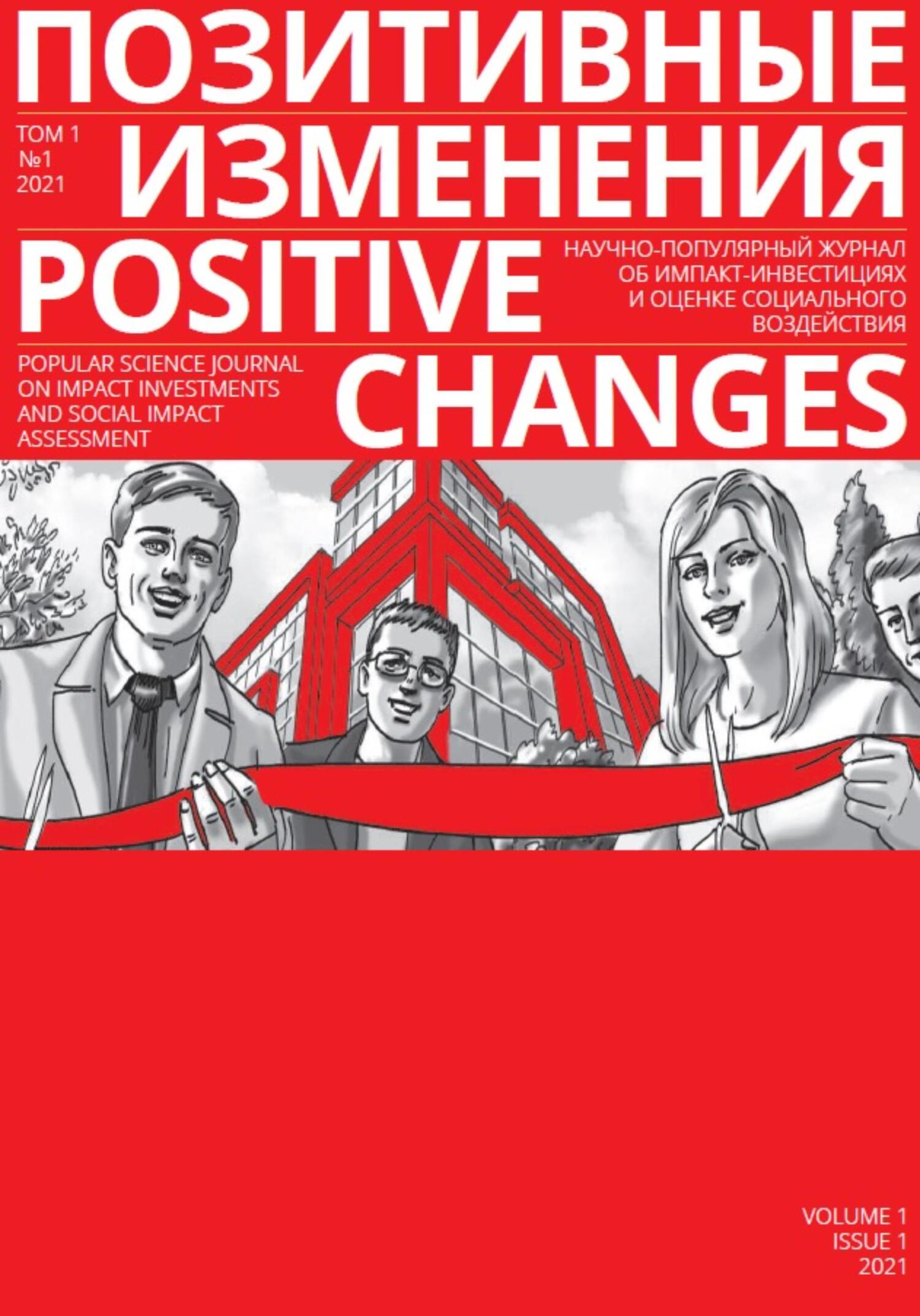alt="" src="images/i_075.png"/>
https://clck.ru/iYpMG
THEORETICAL ASPECTS OF IMPACT INVESTING IN THE MODERN WORLD
2022, Science and Youth: Current Issues of Modern Scientific Research. E. S. Melnik
The article considers the definition of impact investing and analyzes its criteria. The author examines the benefits of impact investing, its impact on the society, and ways to accelerate the development of impact investing in Russia.
https://clck.ru/iZmsu
ESG INVESTING: GLOBAL AND RUSSIAN EXPERIENCE
2022, Economic and Social Problems of Russia. I. A. Chuvychkina
The article discusses the concept of responsible investing, its historical context and evolution. Particular attention is paid to the risks of responsible investing associated with the lack of reporting standards, ratings manipulation, and greenwashing. The author also touches upon the aspects of the climate change policy of the world’s major economies, the development of financial instruments and mechanisms necessary for «green» investment. An analysis of the Russian culture of responsible investing and the barriers to its implementation is conducted.
https://clck.ru/iZqyr
BETWEEN IMPACT AND RETURNS: PRIVATE INVESTORS AND THE SUSTAINABLE DEVELOPMENT GOALS
2022, Business Strategy and the Environment. Falko Paetzold, Timo Busch, Sebastian Utz, Anne Kellers
We investigate the expectations of wealthy private investors regarding the impact and financial return of sustainable investments. Our paper focuses on the sustainable development goals (SDGs) as a framework for investors’ attempts to create impact. We analyze the behavior of 60 high-net-worth individuals (HNWIs), a powerful yet overlooked investor segment. Our results show large allocations in line with the SDGs, which demonstrates these investors’ aim of achieving real-word changes. Furthermore, we show that these "impact investors" have a clear preference for SDGs that are associated with high financial returns. As such, we confirm that both impact and attractive financial returns are expected.
Our findings provide rich, deep insights into how HNWIs practice impact investing and their underlying motivations. We outline practical implications for different stakeholders, notably regarding the fact that financially attractive SDGs are likely to attract substantial amounts of capital, with other SDGs remaining underfunded.
https://clck.ru/iZuuu
THE STATE OF ESG INVESTING: A PORTFOLIO MANAGEMENT PERSPECTIVE
2022, The Journal of Impact and ESG Investing. Stephen M. Horan, Elroy Dimson, Clive Emery, Kenneth Blay and Glen Yelton
Environmental, social, and governance (ESG) strategies have experienced a massive inflow of capital over the past decade, despite investors having little concrete evidence that ESG investing accomplishes its purported goals. This capital inflow also happened without investors possessing the information, tools, and methods needed to evaluate and communicate their specific ESG values, objectives, and preferences. Without evidence of efficacy and clearly articulated investment objectives, it is impossible for investors with ESG intent to know whether they are receiving what they are paying for, to distinguish between investment managers based on nonfinancial objectives, and to improve the likelihood of achieving positive ESG investing outcomes. This article highlights the key challenges faced by ESG investors and portfolio managers implementing ESG investment mandates. Recommendations include an issuer reporting framework that supports portfolio reporting and evaluation as well as an ESG product template that focuses on nonfinancial investment objectives, process elements, and measurable outcomes.

https://clck.ru/iZRyJ
IMPACT BUSINESS AND GOVERNMENT: HOW THE ESG APPROACH IS CHANGING INVESTMENT
2022, Russian Regions in the Focus of Change: Collection of Reports. D. V. Amelicheva, E. A. Semyonova, N. E. Tikhanov, N. K. Shemetova
The traditional concept of investment is changing under the influence of global trends that have manifested themselves with particular clarity in the recent decades. The article considers the types of investment appearing under the influence of increased attention to corporate social responsibility, their features and advantages, the main reasons that led to cooperation between the government and businesses investing in large, socially significant projects, as well as the most likely outcomes of such implementation.
https://clck.ru/iZpP4
DEVELOPMENT OF COOPERATION BETWEEN BELARUS AND CHINA IN THE FIELD OF SOCIAL ENTREPRENEURSHIP
2022, BSU Publishing Center. A. S. Popkova
The author examines China’s existing social entrepreneurship support system. Particular focus is given to social investment funds, the China Social Enterprise and Investment Forum. Fast-growing business services platforms help social entrepreneurs plan and execute their strategic philanthropic projects. The author notes rapid advancement of the fintech industry and the growth of innovative service delivery models, including inclusive financing. Recommendations on the application of effective schemes to stimulate investment in socially-oriented businesses in the Republic of Belarus are provided.
https://clck.ru/ia5Jw
ASSESSING THE EFFECTIVENESS OF SOCIAL INVESTMENT AND THE IMPACT ON THE SUSTAINABILITY RATING OF COMPANIES
2022, Scientific Journal of NRU ITMO. Economics and Environmental Management series. Yu.D. Murmylo
This article discusses approaches to the establishment of a sustainable development concept. The authors cite various scientists’ debatable opinions on adapting the English word «sustainability» into Russian language and consider the options for replacing this term. Various researchers’ views on the definition of "sustainable development" are considered. The main sources of the reference base of this category are highlighted. The author investigates the place of sustainable development among other sciences, analyzes its relevance, indicates the motivation for application and highlights the problems of its research. The author also considers the relationship between the magnitude of costs and the effectiveness of sustainability actions. The paper proposes a methodology for building an information map of social investment vectors. Data from the largest corporations representing various sectors of the Russian business community is used for analysis. The companies’ investments are classified into four areas, based on the beneficiary (the company itself or the society) and application (internal or external investment). A correlation model used in the article demonstrates a direct relationship between social investment per employee and net profit volumes. The proposed methodology is relatively simple and universal in application to companies of different profiles and scales of operation. A











